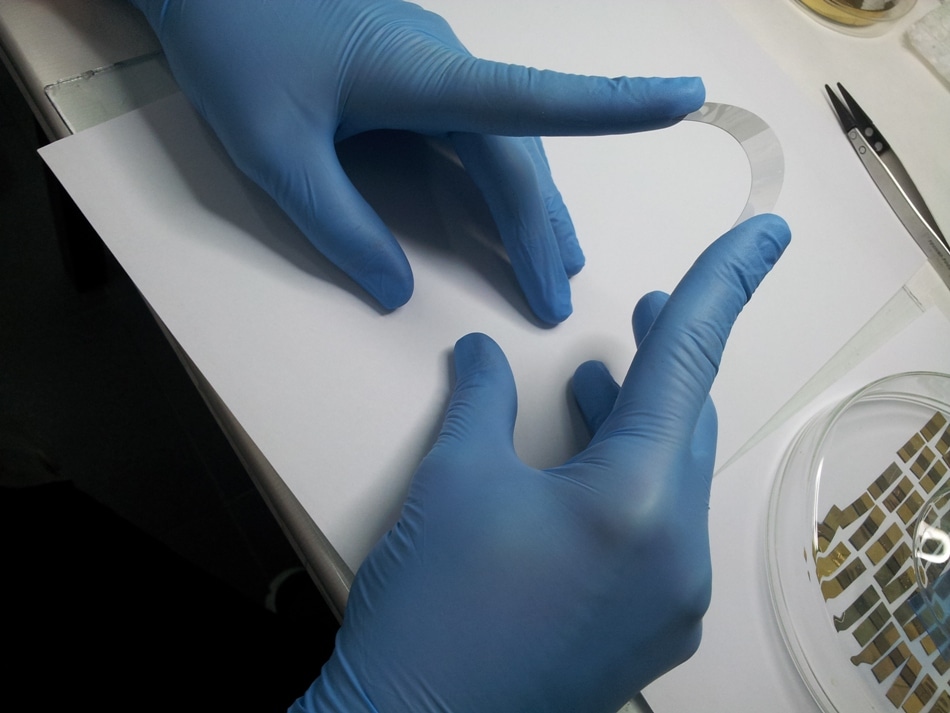May 22 2019
The nonstop flow of electrical current from superconductors could deliver new options for energy storage and superefficient electrical transmission and production, to name just some of the benefits. But the signature zero electrical resistance of superconductors is realized only below a specific critical temperature, hundreds of degrees Celsius below freezing, and is very costly to reach.
 Liquid Phase Graphene Film Deposited on PET substrate (Image credit: Graphene Laboratory, University of Belgrade)
Liquid Phase Graphene Film Deposited on PET substrate (Image credit: Graphene Laboratory, University of Belgrade)
Physicists from the University of Belgrade in Serbia claim they have discovered a way to exploit superthin, wafer-like monolayers of superconductors, for instance, graphene, a monolayer of carbon, thus altering the material’s properties to develop new artificial materials for forthcoming devices. The findings from the researchers’ theoretical calculations and experimental methods have been published in the Journal of Applied Physics, from AIP Publishing.
The application of tensile biaxial strain leads to an increase of the critical temperature, implying that achieving high-temperature superconductivity becomes easier under strain.
Vladan Celebonovic, Study’s First Author, LEX Laboratory, University of Belgrade
The researchers studied the way in which conductivity within low-dimensional materials, such as lithium-doped graphene, transformed when different kinds of forces applied a “strain” on the material. Strain engineering has been applied to tweak the properties of bulkier materials, but the benefit of applying strain to low-dimensional materials, just one atom thick, is that they can withstand large strains without collapsing.
Conductivity relies on the movement of electrons, and although seven months of hard work was required to accurately come up with the math to define this movement in the Hubbard model, the team was at last able to theoretically analyze electron vibration and transport. These models, together with computational approaches, exposed how strain brings on critical changes to doped-graphene and magnesium-diboride monolayers.
“Putting a low-dimensional material under strain changes the values of all the material parameters; this means there’s the possibility of designing materials according to our needs for all kind of applications,” said Celebonovic, who explained that merging the manipulation of strain with the chemical flexibility of graphene offers the potential for a wide range of promising new materials. With the strength, high elasticity, and optical transparency of graphene, the applicability could be extensive — imagine optoelectric devices and flexible electronics.
Taking another step, Celebonovic and colleagues examined how two different methods to strain engineering thin monolayers of graphene influenced the 2D material’s lattice structure and conductivity. For liquid-phase “exfoliated” graphene sheets, the researchers learned that stretching strains pulled apart individual flakes and so raised the resistance, a property that could be applied to build sensors, such as e-skin and touch screens, a thin electronic material that imitates the workings of human skin.
In the atomic force microscopy study on micromechanically exfoliated graphene samples, we showed that the produced trenches in graphene could be an excellent platform in order to study local changes in graphene conductivity due to strain. And those results could be related to our theoretical prediction on effects of strain on conductivity in one-dimensional-like systems.
Jelena Pesic, Study Co-Author, Graphene Laboratory, University of Belgrade
Although the researchers anticipate a number of challenges to attaining the theoretical calculations from this paper experimentally, they are happy that their efforts could soon “revolutionize the field of nanotechnology.”